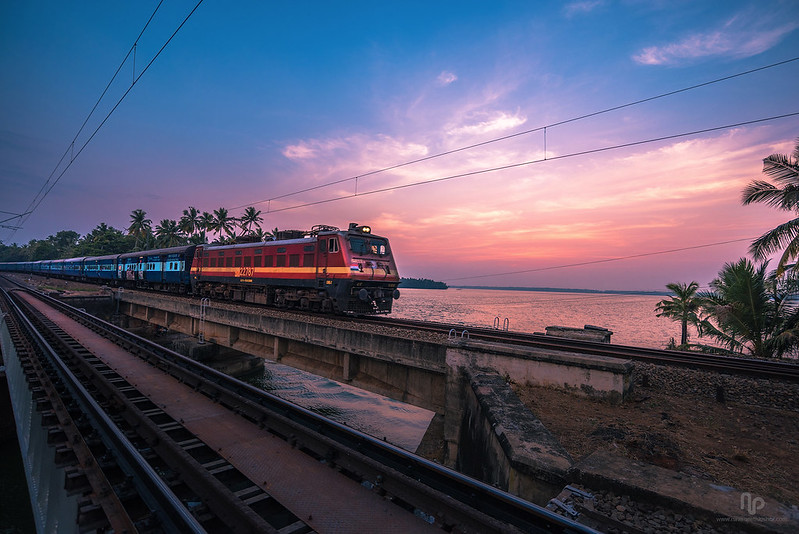In India, private railways have a chequered history. The country began with British-inspired private railway companies in the middle of the 19th century, when the then Governor-General of India, Lord Charles Hardinge, pursued the idea of allowing entrepreneurs to set up a rail system in India.
Independent India nationalised the railway network in 1951, which has continued since, but in 2020, the urge to revisit privatisation has come up yet again.
On July 1, 2020, the Railway Ministry announced that 151 trains on 109 identified routes will be operated by the private sector. The project would entail an investment of about Rs 30,000 crore and the trains will run on routes where the demand is higher than the existing capacity.
The private entity selected, will pay the Indian Railways fixed haulage charges, energy charges as per actual consumption and a share in gross revenue determined through a transparent bidding process.
“Among the major objectives of this project are the induction of modern technology and reduction in transit time and the demand-supply deficit. We are eyeing a quantum jump in technology,” Railway Board Chairman, V.K. Yadav, told this writer.
The government believes that private players will encourage greater competition, lower costs and improve the quality of service.
Indian Railways, correctly known as the nation’s lifeline, is the world’s fourth-largest network, according to e-Rail. But despite its presence and utility over the decades, it has turned into a vast bureaucratic monolith, which could do with some more efficiency.
INFRASTRUCTURE
A look at the numbers is revealing. According to official figures, with a budgetary allocation of Rs. 65,837 crore and the highest-ever outlay of capital expenditure pegged at Rs 1.6 lakh crore in the Union Budget 2019-20, the quality of services offered, a rise in the number of rail accidents, lack of modernisation and never-ending waiting lists, have all made a strong case for introducing privatisation in the Indian Railways.
In 2018-19, for instance, the reserved passenger volume was 16% of the total originating commuters, and almost 8.85 crore waitlisted travellers could not get tickets!
To resolve the increasing need for road decongestion, accident reduction and ensuring energy security, additional dedicated freight corridors need to be constructed. This will lead to separation of passenger and freight traffic and availability of tracks for more passenger trains.
To be sure, many countries have privatised parts, or even their entire railway networks. UK, Japan, Canada, Sweden, Australia and New Zealand, among other countries, come under this category. The UK government decided to privatise railways in 1994 to meet the increased demand for rail services. The single entity of government-owned British Rail was broken up, with various regulatory functions transferred to the newly created office of the Rail Regulator. The ownership of infrastructure, including the larger stations, was passed to Railtrack, a group of companies that owned the track, signalling, tunnels, bridges, level crossings and all but a handful of the stations of the British railway system until 2002.
Track maintenance and renewal assets were sold to 13 companies across the network and ownership of passenger trains and rail freight was passed to other private firms.
Post this decision, private players failed to deliver effective network enhancement. Besides, inadequate control of infrastructure maintenance led indirectly to significant cost escalation and rail accidents.
As this arrangement did not work out, the government took charge of the railway strategy, including expenditure, the main aim being to protect the interests of both the taxpayers and the fare-payers. Network Rail, the new infrastructure owner, was given fuller responsibility for the operation and performance of the rail network, but the government specified what Network Rail should deliver in terms of infrastructure outputs, being priced via a high-level output specification (HLOS), and a statement of funds available (SOFA).
This case study clearly suggests that privatisation or even partial privatisation needs to be tailored to Indian conditions.
The railway is considered a natural monopoly that requires prodigious investment while being also responsible for the safety of its passengers. There is a fear that the private sector might overlook these two critical aspects, driven by their profit-earning motive. The adage holds good: `If your train is on the wrong track, every station you come to is the wrong station.’
With traditional railways operating in competition with new private trains, conflict of interest could lead to disputes, minus a regulator proposed for settling them. Railway Board chairman VK Yadav, however, believes that the national transporter will get a regulator.
PRICING
The government needs to consider not just the farepayers, but also taxpayers. It must adopt the demand-supply model for pricing, rather than opting for the price ceiling template. It needs to fund the railways more from fares than subsidising them from taxes.
Under the price ceiling policy, the economic burden ultimately falls on the taxpayers as most of the cost of the ticket is subsidised and ultimately the railways are starved of funds that are critical for modernisation.
The demand-supply model will not only resolve the waiting list issue, as the ones who really need to travel will do so and undue travelling will stop due to higher prices, but the railways will end up with more revenue, which is crucial for modernisation and expansion.
In an interview, responding to a question on the possibility of higher fares in these trains, Chairman Yadav said that due to the competition in the market, he did not expect the fares to be very high.
EFFICIENCY
Currently, a great deal of railway’s attention gets diverted from its core functions like running trains and serving passengers, to include a list of non-core functions like running schools and offering medical services to its employees. The civil engineering department gets the responsibility of maintaining the tracks as well as the stations.
More dedicated freight corridors need to be constructed so that the passenger and freight traffic is separated, which will ultimately lead to faster speed and availability of tracks for additional passenger trains.
Sadly, the bureaucratic minefield, where factors such as reservation, labour unions and procurement routinely discredit the merits of the talented workforce, have also come to dominate the operational agenda of the Railways. Privatisation could offer a way out of these institutional troubles.
Read more: Unboxing the e-Vidya Scheme for Learning
Post Disclaimer
The opinions expressed in this essay are those of the authors. They do not purport to reflect the opinions or views of CCS.






